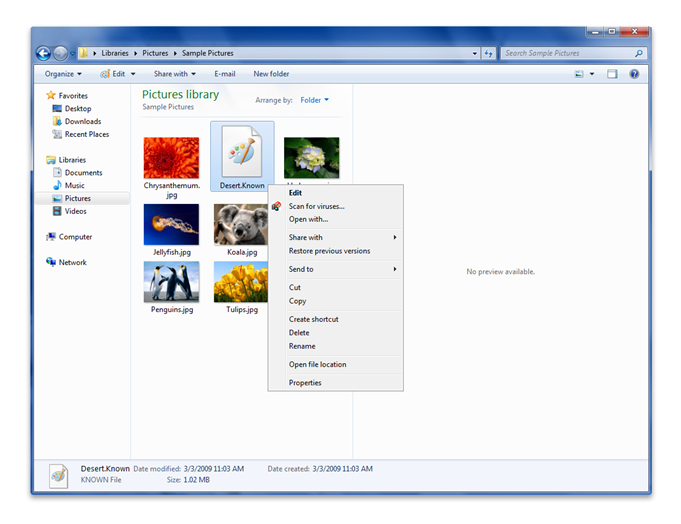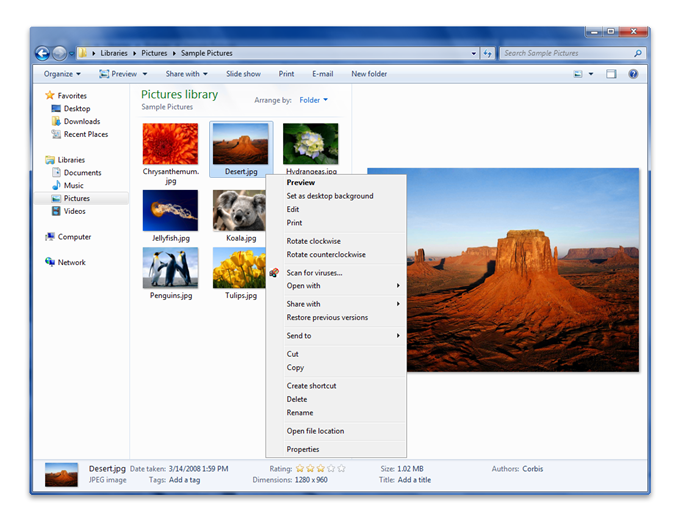File Type Handlers
Registering a file type is the first step in creating a file association, which makes that file type "known" to the Shell. However, without file type handlers, the Shell is unable to expose information to the user from and about the file.
This topic is organized as follows:
Make a File Type Known to Shell
In the following screen shot of Windows Explorer, the image file Desert.known appears in the Shell Pictures library, and is associated only with the Paint application.

The Desert.known file in the preceding screen shot lacks the following functionality that is enabled by a file type handler:
- Thumbnail or preview
- Image-specific verbs in the shortcut menu, such as:
- Rotate Preview
- Set as Desktop Background
- Image-specific properties in the Details pane, such as:
- Date Taken
- Tags
- Rating
- Indexing of file text
In the following screen shot, the same file (Desert.known) has the .jpg extension, which is a registered file type that has associated file type handlers, so a thumbnail image and more properties are shown.

File Type Handler Descriptions
The functionality provided by each file type handler is listed in the following table:
| Handler | Description |
|---|---|
| Shortcut menu | A shortcut menu handler, sometimes referred to as a context menu handler, is a file type handler that adds commands to an existing context menu. These handlers are associated with a particular file type and are called any time a context menu is displayed for a member of the file type. |
| Thumbnail | A handler that provides an image to represent a Shell item. |
| Property | A property handler that provides access to item properties for Windows Search, the Windows Explorer and other applications that need to access properties. |
| Preview | A handler that quickly produces a read-only, simplified view of the item to be displayed in the Windows Explorer preview pane. |
| Filters | A filter, an implementation of the IFilter interface, that scans documents for text and properties (also called attributes). It extracts chunks of text from these documents, filtering out embedded formatting and retaining information about the position of the text. It also extracts chunks of values, which are properties of an entire document or of well defined parts of a document. IFilter provides the foundation for building higher-level applications such as document indexers and application-independent viewers. |
Related topics